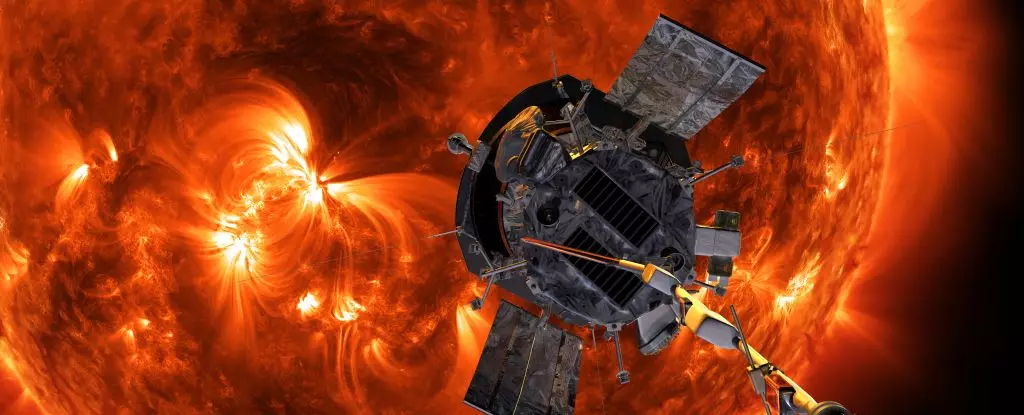NASA’s Parker Solar Probe is on the brink of another record-breaking feat. Set to glide closer to the Sun than any other man-made object has done before, the spacecraft is a testament to human ingenuity and ambition. On December 24, during its 22nd flyby, Parker will venture within a staggering 6.1 million kilometers (3.8 million miles) of the Sun’s surface, reaching exceptional speeds of around 192 kilometers per second (approximately 427,000 miles per hour). This mission not only embodies cutting-edge engineering but also serves as a critical step toward answering profound astrophysical questions that have puzzled scientists for decades.
With all systems operational, the spacecraft is prepared for its high-stakes flyover at 06:53 EST (11:53 UTC). This close approach, referred to as a perihelion, is the first in a final series of encounters scheduled through 2025. Such daring missions have been the hallmark of the Parker Solar Probe since its launch in 2018. According to Arik Posner, the program scientist for the mission at NASA, this endeavor exemplifies “bold missions,” emphasizing humanity’s capacity to explore the unknown while addressing long-standing cosmic inquiries.
The objectives of the Parker Solar Probe go beyond mere exploration; they aim to uncover underlying principles of solar dynamics and behavior. The Sun’s atmosphere, a region extending more than 8.3 million kilometers beyond its visible surface, possesses temperatures that defy explanation—significantly exceeding the cooler photosphere. This phenomenon raises challenging questions regarding solar physics, including the generation of the Sun’s magnetic field and the mechanisms driving solar activity cycles.
The Parker Solar Probe is equipped to gather unprecedented data from the solar corona by traversing this energetic and high-temperature region. Scientists anticipate insights that may illuminate the processes fueling solar mysteries, fundamentally transforming our understanding of not just the Sun but astrophysical bodies more broadly. By examining the solar environment up close, researchers hope to decipher the complex interactions occurring within the Sun’s atmosphere.
Astrophysicist Nour Raouafi from Johns Hopkins University likens the upcoming perihelion to the historic Moon landing of 1969. Approaching the Sun is tantamount to “almost landing on a star,” a phrase that encapsulates the magnitude of this endeavor. Each subsequent perihelion is not merely a race for records; it is an evolution of our scientific understanding, pushing the boundaries of what we know about stellar behavior.
After this pivotal flyby, the probe is expected to emit a beacon on December 27 to signal that it has successfully navigated the extreme conditions it encounters. The significance of returning data from such immense solar proximity cannot be overstated. For the first time, humanity will be privy to revelations from a realm hitherto unexplored, expanding our comprehension of solar dynamics and their implications across the cosmos.
Amid the excitement of imminent discoveries, scientists must also confront the challenges that lie ahead. The Parker Solar Probe has a limited operational window linked to its fuel reserves, which are used to maintain its thermal protection and adjust its trajectory. Once these reserves are depleted, the mission will reach an inevitable closure, and the probe will succumb to the Sun’s immense gravitational forces, potentially becoming a molten artifact circling the star. As Justin Kasper, principal investigator for the probe, elucidated, the fate awaits the spacecraft in a spectacle where its heat shield can withstand dramatic temperatures, yet the rest of its components will likely be vaporized in an intense inferno.
Nonetheless, the value of the data collected will endure long past the mission’s conclusion. The Telemetered findings and scientific insights will shape our understanding of solar physics for years to come, establishing a foundation for future space explorations.
The Parker Solar Probe represents a pinnacle of technological achievement and scientific curiosity. As it embarks on its historic journey once again, we stand on the precipice of discovery, eagerly anticipating the knowledge it will bestow upon us. By challenging the norms of cosmic exploration and seeking answers to enigmatic solar phenomena, this probe is not just an instrument of data collection; it symbolizes humanity’s unyielding quest for knowledge. As the probe consistently ventures where no spacecraft has gone before, it reiterates our commitment to unveil the cosmos—one daring approach at a time. The legacy of the Parker Solar Probe and its findings will likely echo throughout future generations as a beacon for scientific ambition and pioneering endeavors in space exploration.


Leave a Reply